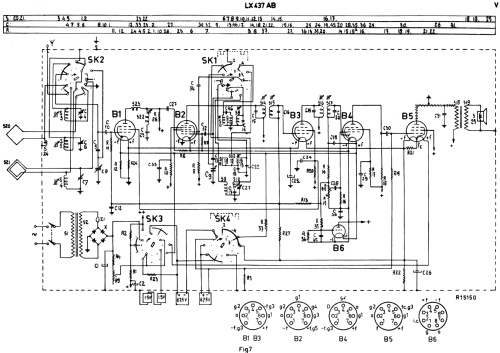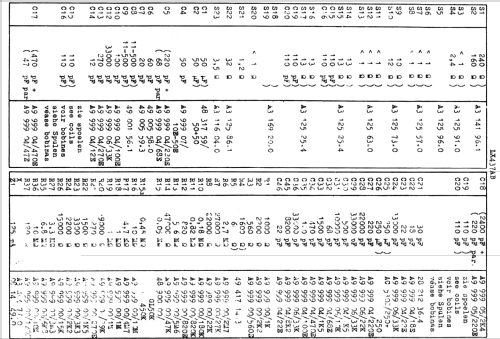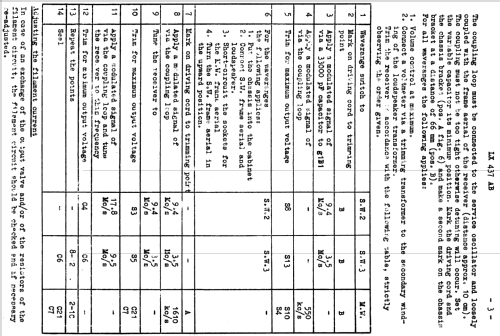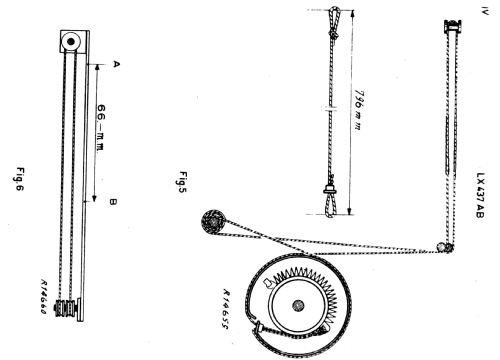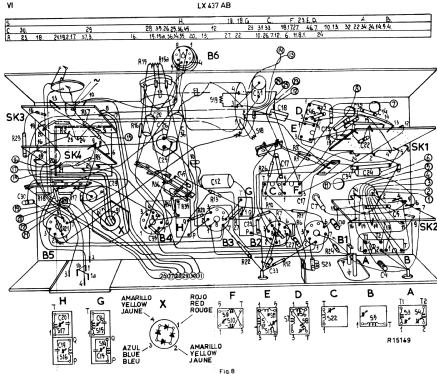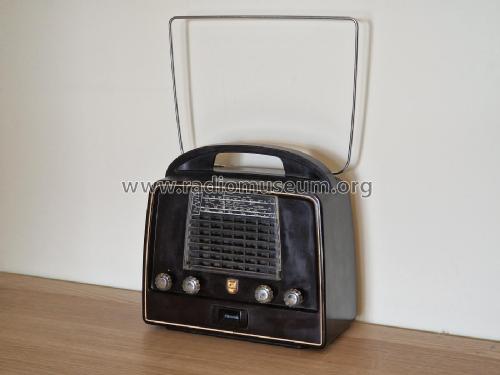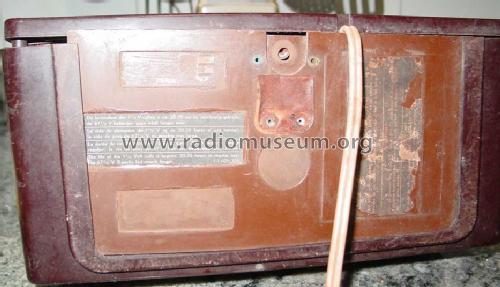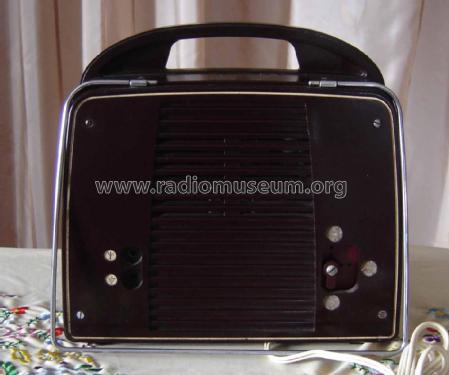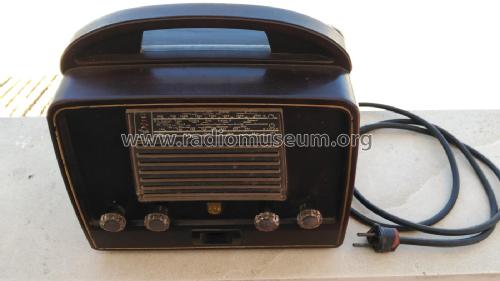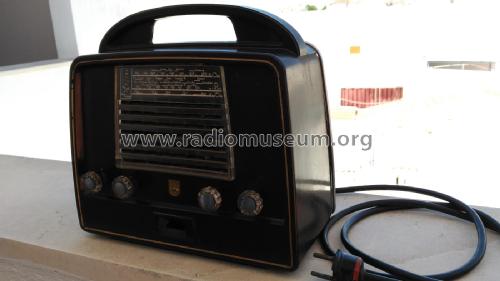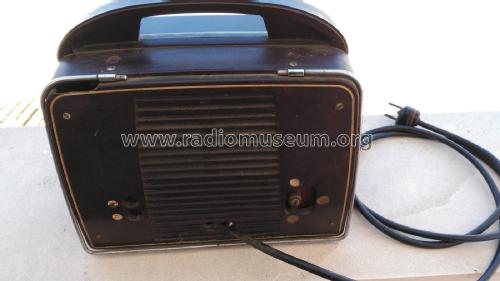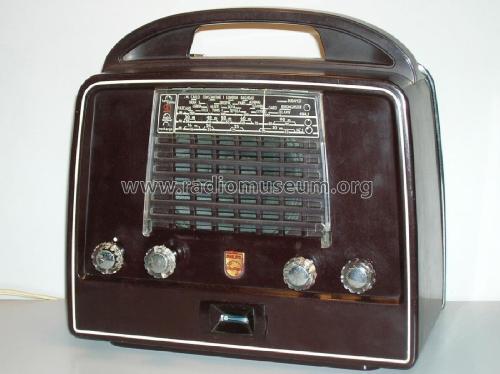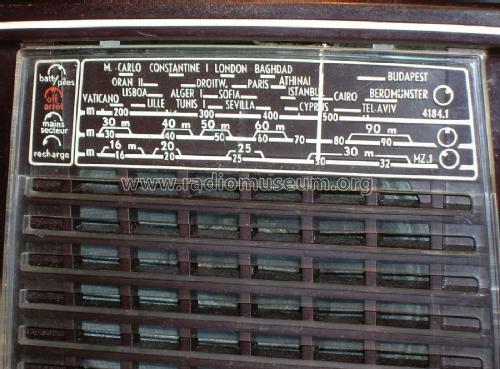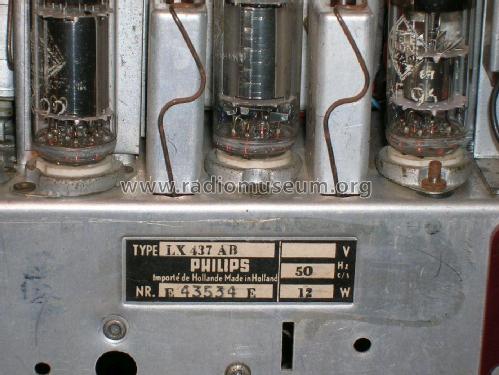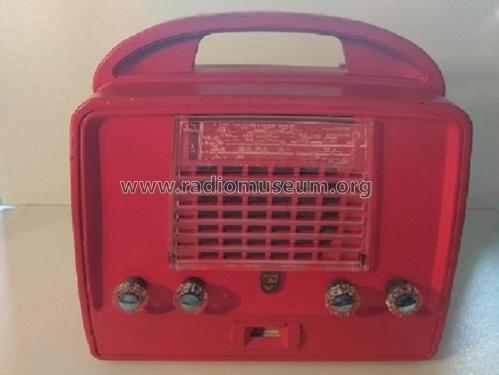- Country
- Netherlands
- Manufacturer / Brand
- Philips; Eindhoven (tubes international!); Miniwatt
- Year
- 1954/1955
- Category
- Broadcast Receiver - or past WW2 Tuner
- Radiomuseum.org ID
- 114083
Click on the schematic thumbnail to request the schematic as a free document.
- Number of Tubes
- 6
- Number of Transistors
- Semiconductors
- Selengleichrichter
- Main principle
- Superhet with RF-stage; ZF/IF 452 kHz; 2 AF stage(s)
- Tuned circuits
- 6 AM circuit(s)
- Wave bands
- Broadcast plus 2 Short Wave bands.
- Power type and voltage
- Line / Batteries (any type) / AC 110; 150; 220 / 2 x 1,5 & 2 x 67,5 Volt
- Loudspeaker
- Permanent Magnet Dynamic (PDyn) Loudspeaker (moving coil) / Ø 5 inch = 12.7 cm
- Power out
- 0.3 W (unknown quality)
- Material
- Bakelite case
- from Radiomuseum.org
- Model: LX437AB - Philips; Eindhoven tubes
- Shape
- Portable set > 8 inch (also usable without mains)
- Dimensions (WHD)
- 260 x 250 x 120 mm / 10.2 x 9.8 x 4.7 inch
- Notes
-
The Philips receiver LX437AB features a tuned rf preamplifier with aperiodic coupling to the mixer stage.
Power consumption from AC mains: 17W. Selenium rectifier bridge.
- Price in first year of sale
- 1,950.00 PTE
- Mentioned in
- -- Original prospect or advert
- Literature/Schematics (1)
- -- Original-techn. papers.
- Author
- Model page created by Mario Coelho. See "Data change" for further contributors.
- Other Models
-
Here you find 5274 models, 4420 with images and 3459 with schematics for wireless sets etc. In French: TSF for Télégraphie sans fil.
All listed radios etc. from Philips; Eindhoven (tubes international!); Miniwatt
Collections
The model is part of the collections of the following members.
Forum contributions about this model: Philips; Eindhoven: LX437AB
Threads: 1 | Posts: 3
Hi.Radiophiles, It came to me for repair/recover one portable radio LX 437 AB.I don't have its schematic,but supose may be similar to model LI 437/AB.My problem is that I don't have the correct filament tensions when switched to the mains.As a matter of fact,the wires that should conect to the batteries have been cut so I can not test it with the batteries once they are not there.And some help would be very welcome if somebody could explain me the wiring of the tubes filaments,once I find very dificult to understand the complexity of the switch wiring together with the dificult access to components and lack of data of voltages.
May I wish to all members and their families a Merry Christmas and a Happy new Year with greetings from our Sunny Algarve!
Antonio Barros-Regada, 21.Dec.13
